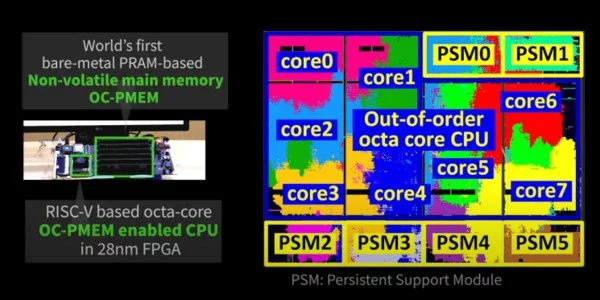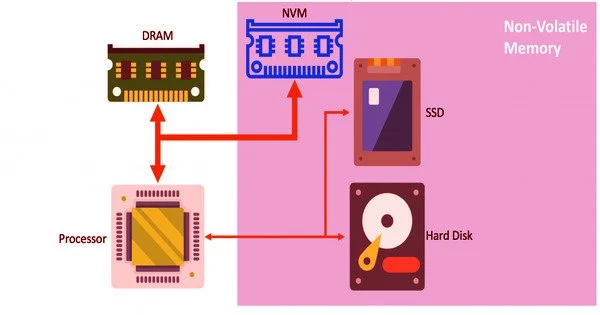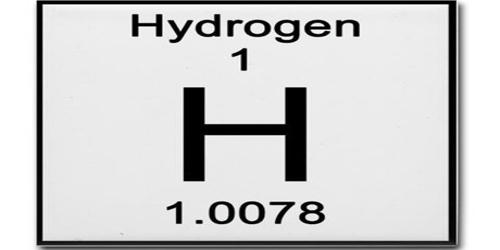Non-volatile memory (NVM) or non-volatile storage is a type of computer memory that can retain data even when the power is turned off. In contrast, volatile memory requires constant power to retain data. Non-volatile memory is commonly used to describe storage in semiconductor memory chips that store data in floating-gate memory cells made up of floating-gate MOSFETs (metal-oxide-semiconductor field-effect transistors), including flash memory storage such as NAND flash and solid-state drives (SSD).
A research team created hardware and software technology to ensure data and execution persistence. The Lightweight Persistence Centric System (LightPC) makes systems resistant to power outages by using non-volatile memory as the primary memory.
A KAIST research team created hardware and software technology to ensure data and execution persistence. The Lightweight Persistence Centric System (LightPC) makes systems resistant to power outages by using non-volatile memory as the primary memory.
We mounted non-volatile memory on a system board prototype and developed an operating system to test the effectiveness of LightPC. LightPC can be utilized in a variety of fields such as data centers and high-performance computing to provide large-capacity memory, high performance, low power consumption, and service reliability.
Professor Myoungsoo Jung
Professor Myoungsoo Jung explained, “We mounted non-volatile memory on a system board prototype and developed an operating system to test the effectiveness of LightPC.” The team confirmed that LightPC validated its execution by powering up and down in the middle of execution, demonstrating up to eight times more memory, 4.3 times faster application execution, and 73% lower power consumption than traditional systems.
Professor Jung said that LightPC can be utilized in a variety of fields such as data centers and high-performance computing to provide large-capacity memory, high performance, low power consumption, and service reliability.
Power failures on legacy systems, in general, can result in the loss of data stored in the DRAM-based main memory. Non-volatile memory, unlike volatile memory such as DRAM, can retain data in the absence of power. Despite the fact that non-volatile memory has lower power consumption and a larger capacity than DRAM, it is typically used for secondary storage due to its lower write performance. As a result, nonvolatile memory is frequently used in conjunction with DRAM. However, due to the complicated memory microarchitecture, modern systems using non-volatile memory-based main memory experience unexpected performance degradation.

To enable both data and execution persistence in legacy systems, data must be moved from volatile to non-volatile memory. Checkpointing is one option. It transfers data on a regular basis to prepare for a power outage. While this technology is critical for ensuring user mobility and dependability, it also has fatal flaws. It takes more time and power to move data, and it necessitates a data recovery process as well as a system restart.
To address these issues, the research team created a processor and memory controller to improve the performance of non-volatile memory-only memory. LightPC matches DRAM performance by minimizing internal volatile memory components from non-volatile memory, exposing non-volatile memory (PRAM) media to the host, and increasing parallelism to service on-the-fly requests as soon as possible.
Non-volatile memory is typically used for secondary storage or long-term persistent storage. The most common type of primary storage today is a volatile form of random access memory (RAM), which means that anything contained in RAM is lost when the computer is shut down. However, most types of nonvolatile memory have limitations that make them unsuitable for primary storage. Typically, non-volatile memory costs more, provides lower performance, or has a limited lifetime compared to volatile random access memory.
Non-volatile data storage can be categorized into electrically addressed systems (read-only memory) and mechanically addressed systems (hard disks, optical disc, magnetic tape, holographic memory, and such). Generally speaking, electrically addressed systems are expensive, have limited capacity, but are fast, whereas mechanically addressed systems cost less per bit, but are slower.
The team also demonstrated operating system technology that quickly makes the execution states of running processes persistent without the need for a checkpointing process. To support consistency within a much shorter period than the standard power hold-up time of about 16 minutes, the operating system prevents all modifications to execution states and data by keeping all program executions idle before transferring data. For consistency, when power is restored, the computer almost immediately revives itself and re-executes all offline processes without the need for a boot process.
















